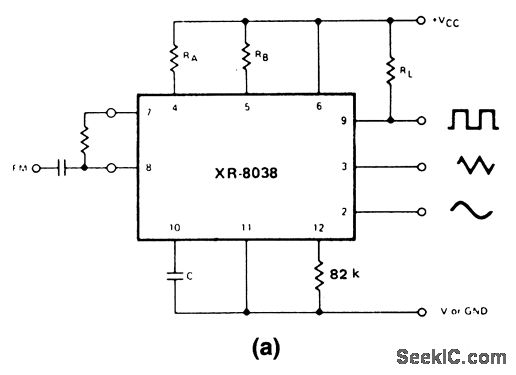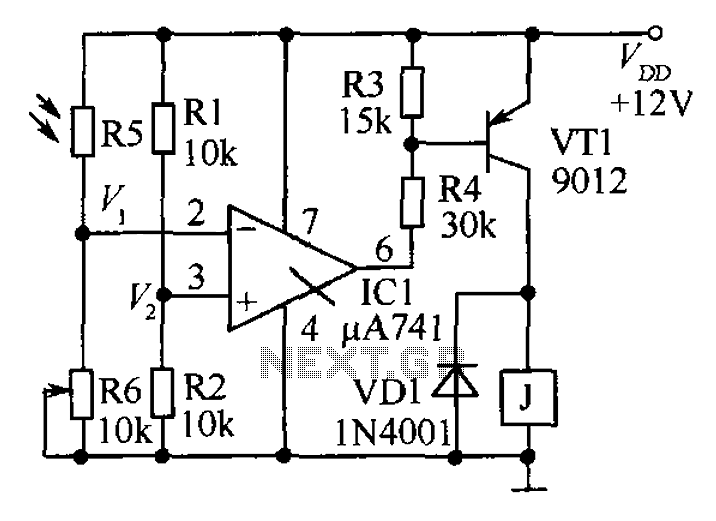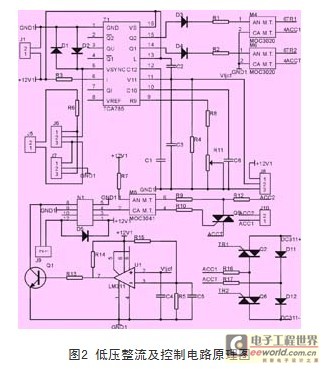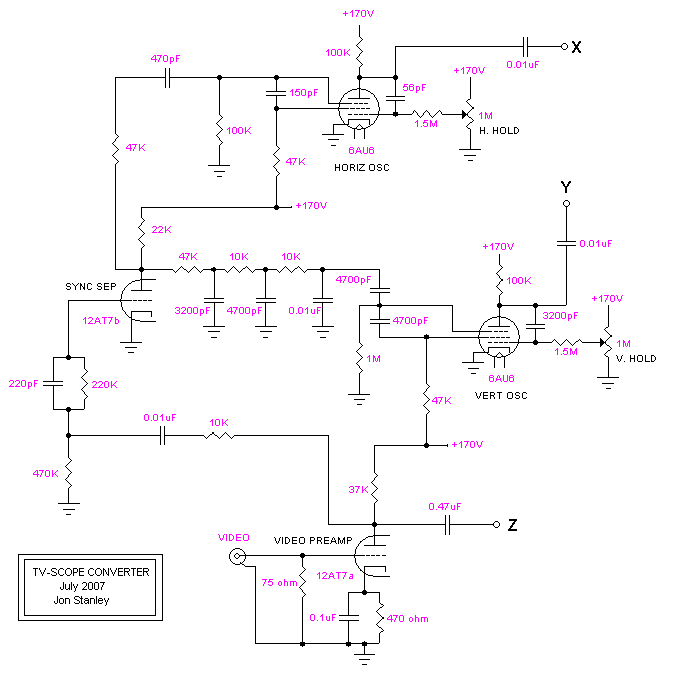
Precision Full-Wave Ac/Dc Converter
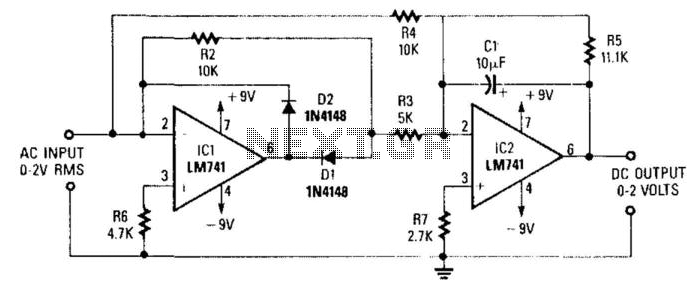
A DC level is generated that corresponds to the AC input RMS value (for a sine wave). The gain of the integrated circuit (IC) is set to a factor of 2 to 1.11. This factor represents the average-to-RMS conversion ratio. IC1 and IC2 function as a full-wave rectifier circuit, utilizing diodes D1 and D2.
The described circuit is designed to convert an alternating current (AC) signal into a direct current (DC) level that accurately reflects the root mean square (RMS) value of the input signal, particularly when the input is a sine wave. The gain setting of the integrated circuit (IC) is crucial for ensuring that the output voltage level is proportional to the RMS value of the input signal. The specified gain range of 2 to 1.11 indicates that the circuit can be calibrated to provide an output that is either twice or slightly more than the average value of the input AC signal, depending on the specific application requirements.
The full-wave rectifier configuration, implemented with IC1 and IC2 along with diodes D1 and D2, allows for the effective conversion of both halves of the AC waveform into a unidirectional current. This configuration enhances the efficiency of the rectification process by minimizing the ripple voltage in the output, which is particularly important for applications that require a stable DC level for further processing or measurement.
In this setup, diodes D1 and D2 are oriented to conduct during opposite halves of the AC cycle, ensuring that the output voltage remains positive regardless of the input polarity. The choice of diodes is critical; they must have a suitable forward voltage drop and recovery time to minimize losses and ensure quick response times for varying input frequencies.
The output from the rectification stage is then filtered to smooth out any remaining ripple, typically using capacitors and possibly inductors, before being fed into subsequent stages of the circuit that may include additional amplification or analog-to-digital conversion, depending on the intended application. Overall, this circuit design is integral for applications requiring precise measurement or control of AC signals in a DC format. A dc level is produced that corresponds to the ac input rms value (if sine wave), -i set the gain of IC 2 to 1.11. This factor is the average-to-rms conversion factor. IC1 and IC2 act as a full-wave rectifier circuit, with Dl and D2.
The described circuit is designed to convert an alternating current (AC) signal into a direct current (DC) level that accurately reflects the root mean square (RMS) value of the input signal, particularly when the input is a sine wave. The gain setting of the integrated circuit (IC) is crucial for ensuring that the output voltage level is proportional to the RMS value of the input signal. The specified gain range of 2 to 1.11 indicates that the circuit can be calibrated to provide an output that is either twice or slightly more than the average value of the input AC signal, depending on the specific application requirements.
The full-wave rectifier configuration, implemented with IC1 and IC2 along with diodes D1 and D2, allows for the effective conversion of both halves of the AC waveform into a unidirectional current. This configuration enhances the efficiency of the rectification process by minimizing the ripple voltage in the output, which is particularly important for applications that require a stable DC level for further processing or measurement.
In this setup, diodes D1 and D2 are oriented to conduct during opposite halves of the AC cycle, ensuring that the output voltage remains positive regardless of the input polarity. The choice of diodes is critical; they must have a suitable forward voltage drop and recovery time to minimize losses and ensure quick response times for varying input frequencies.
The output from the rectification stage is then filtered to smooth out any remaining ripple, typically using capacitors and possibly inductors, before being fed into subsequent stages of the circuit that may include additional amplification or analog-to-digital conversion, depending on the intended application. Overall, this circuit design is integral for applications requiring precise measurement or control of AC signals in a DC format. A dc level is produced that corresponds to the ac input rms value (if sine wave), -i set the gain of IC 2 to 1.11. This factor is the average-to-rms conversion factor. IC1 and IC2 act as a full-wave rectifier circuit, with Dl and D2.

